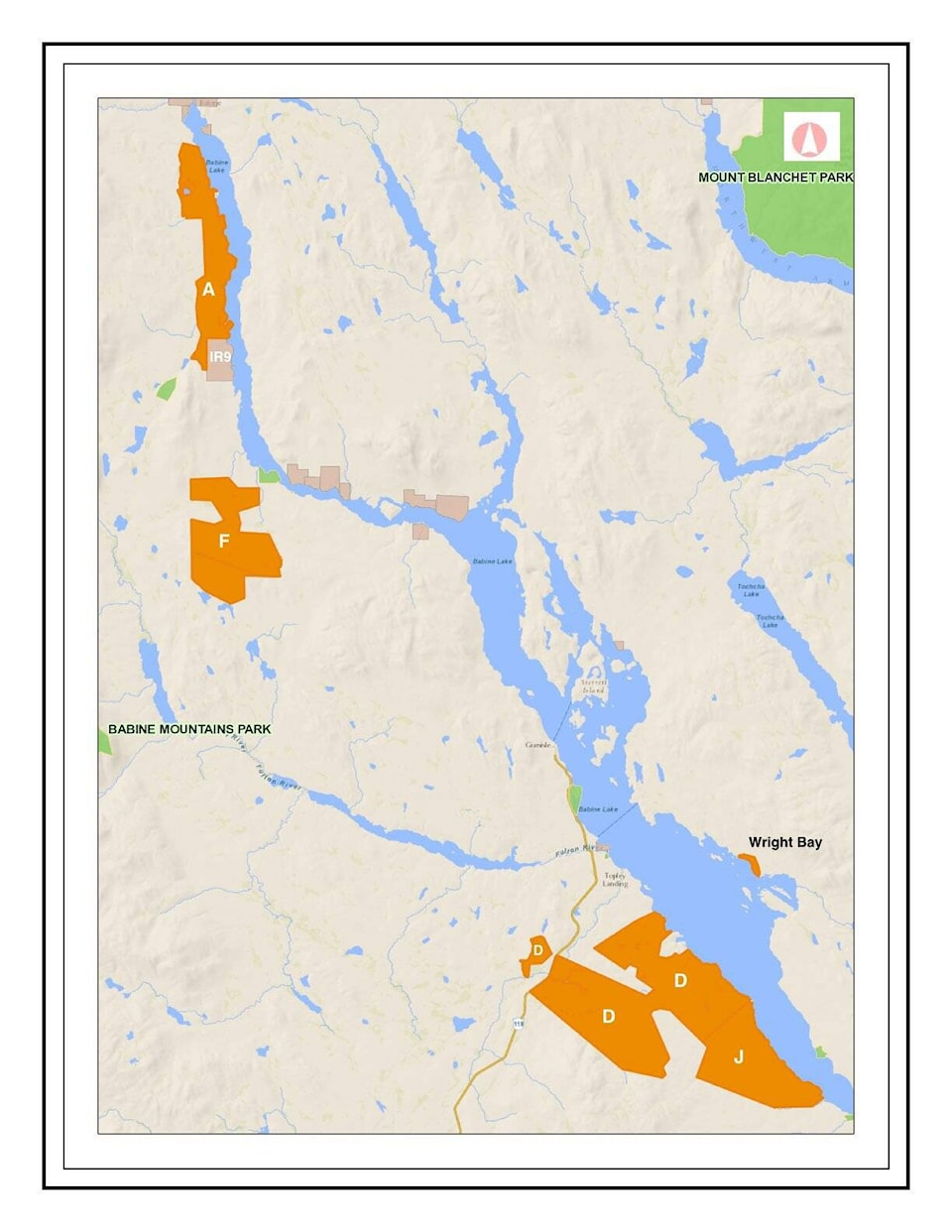Lake Babine Nation (LBN) is large in both geography and population, making it one of the most powerful governmental entities in the Regional District of Bulkley-Nechako (RDBN).
A contingent from LBN made an informational presentation to the mayors and directors of the Regional District at their June 22 board meeting, to update those officials on their Lake Babine Nation Foundation Agreement. This document is a working pact between LBN, the Province of British Columbia and the Government of Canada that was initiated in 2017, and first signed in introductory form in 2020. It’s latest development was a massive handover of Crown land this past January.
The Lake Babine Nation, like most original and ongoing Indigenous cultures overlaid by B.C., has never ceded their territory to any government of European root. Land ownership has only ever been assumed by colonial interests, not transfered out of Indigenous hands. The Crown agreed to at least a 20,000-hectare reparation to LBN on that theme, and there is more relationship-building underway between the three governance entities.
The contingent updating the RDBN board included elected chief Murphy Abraham (along with elected councillors Verna Power, Melvin Joseph, Mildred Alec-George, Jason Charlie, Debbie West and Wayne Johnson), director of implementation Betty Patrick, legal council Dominique Nouvet, CEO Monty Palmantier, chief negotiator Cory Waters, land strategies director Ashlyn Schwaiger, and provincial negotiator Ian Hollingshead, Andrea Follett from the provincial Ministry of Indigenous Relations & Reconciliation, and others (some in person and some by screen).
While most delegations presenting to the RDBN have about 20 minutes to formally speak at the table, this conversation was scheduled from the start to take an hour, and most of that was used for the circles of dialogue.
RDBN chair Mark Parker said, near the conclusion of the meeting, to LBN chief and council, “it was great when you talked about building the local economy. I’m just wondering if it would be advantageous if we were to send you a copy of our strategic plan for the Regional District…to give you an idea what we’re looking at in the region, what we need to work on, looking at economic either issues or benefits, just so you have an idea. That would give us an opportunity to work towards common goals, if there’s some overlap on what you’re looking at as well in the region.”
“I think that would be a great next step,” said chief Abraham, “because what we shared here with you is a high summary of it, and I know that when it pertains to the work that we’re doing here within Lake Babine Nation, we’re very complex. We have multiple communities, a number of clans, so we’ve been doing our best to keep everyone informed with the work we’re doing moving forward. That is something we can accommodate, so mussi cho.”
The Foundation Agreement is a matter of public record, Abraham added, so everyone can read it online at the LBN or other partner governments’ websites.
Waters added that the RDBN has helped matters by hiring a First Nations Liaison (Justin Greer) to facilitate conversations between locality-based governments like those of the Regional District and any Indigenous body. “We appreciate that there is an interest in improving information to the public, but also improving communication as we are implementing this agreement. Part of my orientation in the reconciliation space is, there is absolutely an important government-to-government driver and imperative in reconciling Aboriginal rights and title, yet reconciliation is increasingly everyone’s responsibility and opportunity. The work, chairperson, that you just referred to with sharing your strategic plan, I believe, there is so much shared interest, and Lake Babine is a phenomenal partner in advancing solutions and practical approaches to moving forward together. I’m really encouraged by that offer and I would invite the board to think about what those connections and opportunities and shared interests might be.
“I want to acknowledge the value in formalizing relationships and establishing protocols, and regular commitments to not only meet and talk about shared interests but also advance new opportunities in a structured and committed way.”
Parker said the offer to share the strategic plan included an offer to deliver it personally and have more face to face discussions, one local government to another.
“Hopefully this is the start of relationship building, in person.”
“I look forward to that meeting,” Abraham replied, with thanks.
